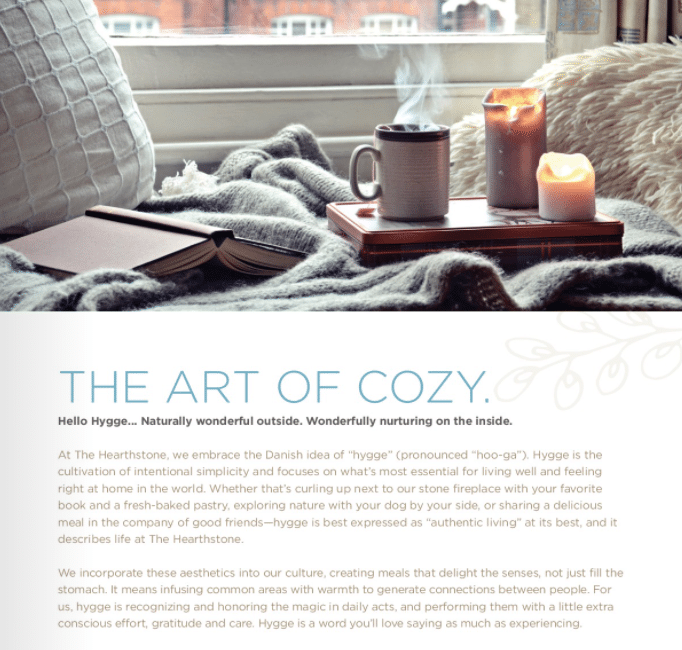
28 Sep Addressing “Internalized Ageism” in Senior Living Marketing, Part 2
Last week we explored the psychological term “internalized ageism” and its implications for marketing to the senior living industry. In part 2, we show how 3rdThird Marketing deals with this perception bias with real-life examples from our portfolio.
Here’s a quick recap of part 1…
Dr. Tracey Gendron, gerontologist at Virginia Commonwealth University, says that all of the negative conditioning we receive throughout life about older people creates a bias that can be summed up as “internalized ageism.” Psychologist Dr. Todd D. Nelson from California State University-Stanislaus puts it this way: “a prejudice against our feared future self.”
At 3rdThird we see internalized ageism as a strong, unconscious consumer preference. While we hope this attitude changes, we have to meet prospects where they are at mentally, emotionally and culturally. In short, we sum it up this way: the market doesn’t want to be confronted with their own aging. So what’s a marketer to do?
Be open to conceptual work.


There’s no rule that says you have to show photos of seniors to sell senior living.* Same goes for the other default practice of using architectural photos or renderings of your building shot from the parking lot. Our two campaigns above demonstrate how purely conceptual work can both sell feeling as well as grab attention. The Cove East campaign with the mermaid was so successful that the project leased up in just two months of marketing with a ROI of 200:1. The Bayview launch had a 90:1 ROI.
When appropriate and on-brand, purely conceptual approaches can evoke a feeling or present a benefit in a unique way. Using visual metaphors and comparisons with humor can create a far a more positive association with your community than stock photo of seniors having coffee.
We have advertised senior communities and events using ripe bananas, llamas, peacocks, butterflies, European landmarks, ballet dancers, unicorns, mermaids, cats, dogs, elephants on unicycles, movie posters, the statue of David and vintage photography. What do these images have to do with senior living? With a talented designer and a good copywriter, you can make relevant connections with standout creative that will get lots of attention and a great ROI.
Healthy people doing aspirational things.

Of course, we do show age-appropriate elders and always will. But we show only healthy people living aspirational lives with energy, vibrancy and meaning. Which is exactly what your target audience wants for themselves.
As we said in Part 1 of this blog, the Dove soap campaign does an excellent job of showing women of all shapes and sizes in their real women advertising campaign. But none of the plus-size models are unattractive or unhealthy looking. They are fit with beautifully glowing skin. And fit people are attractive at any size or age. Vitality will always be in style.
Is this misleading? Only if your community isn’t truly committed to improving the health and well-being of our elders. We can and we should aspire to become healthier, steadier, more balanced and vibrant at any age. And it is ageist to say, “Well that person is age __ and is in really bad shape. They’ll never do ________ again.” Which is really saying, “We need to reinforce their beliefs and our biases with realistic images.” However, we don’t have to be a party to disempowering images. After all, if a highly motivated older person CAN make great strides through daily exercise, healthy food and enrichment programs, shouldn’t we encourage that?
Show a lifestyle they can live into.

At 3rdThird, we show lifestyle images with interior and exterior shots that have been staged with food, wine, flowers, views, etc. to set a scene, tell a story and invite the viewer into the frame. It looks alive and lived in. We often do show older women or couples, but they are moving with energy and purpose, so they there is a slight blur to their image. Or they may have their backs to the camera, staring out at a great view or into a beautiful fireplace. What we never show is an elderly person staring directly into the camera sitting in a wheelchair with a young nurse touching her shoulder, or elders looking silly or acting silly.
Food sells.
If you have a great culinary program, use it in your marketing. As we say at The Culinary Coach, “Food is marketing and every meal sends a message.” If your food is great, you can use event marketing featuring your culinary menu.
If your culinary program is done right, it creates a halo effect for other areas of the community. The prospect will likely think, “Well, the food is great. So I bet the lifestyle, care and wellness programs are pretty great as well.” Conversely, if a community can’t get their food right, can a prospect really be expected to trust the community with their medications, security and safety? As the old saying goes, “How you do one thing is how you do everything.”
If you don’t have a great culinary program, you can still lead with food—just make sure it’s catered and delicious. A good food image can catch the eye just as well as a lifestyle image. But if your culinary program needs help, reach out to The Culinary Coach to learn more.
Don’t remind them of what they don’t want.
There’s another, very powerful reason to avoid showing care images, even when you’re selling assisted living, skilled nursing, memory care or rehab. In a longitudinal study by Brooks Adams Research that spanned 25 years, 30 markets and more than 10,000 people, Baby Boomers said their number one goal is “Staying out of the nursing home.” So, it boggles my mind when I see our industry showing frail people in clinical settings, spotlighting the very scenario the target audience is afraid of most. No other industry advertises that way.
If you’re interested in learning more about advertising and marketing for senior living communities that puts forth a positive vibe that your prospects will love, please get in touch with us.
Derek Dujardin is creative director at 3rdThird Marketing in Seattle, which specializes in creative branding, lead generation, digital marketing and social media for senior living communities. Please feel free to contact Derek for further inquiries.
*PLEASE NOTE: We prefer to avoid the term “senior living” in marketing and messaging, but we also have to be realistic that “senior living” is a very popular search term for Google. Therefore, in order to be better ranked, we reluctantly adopt the term in copy when necessary.
Please check out the 3rdThird Digital Brochure here!
